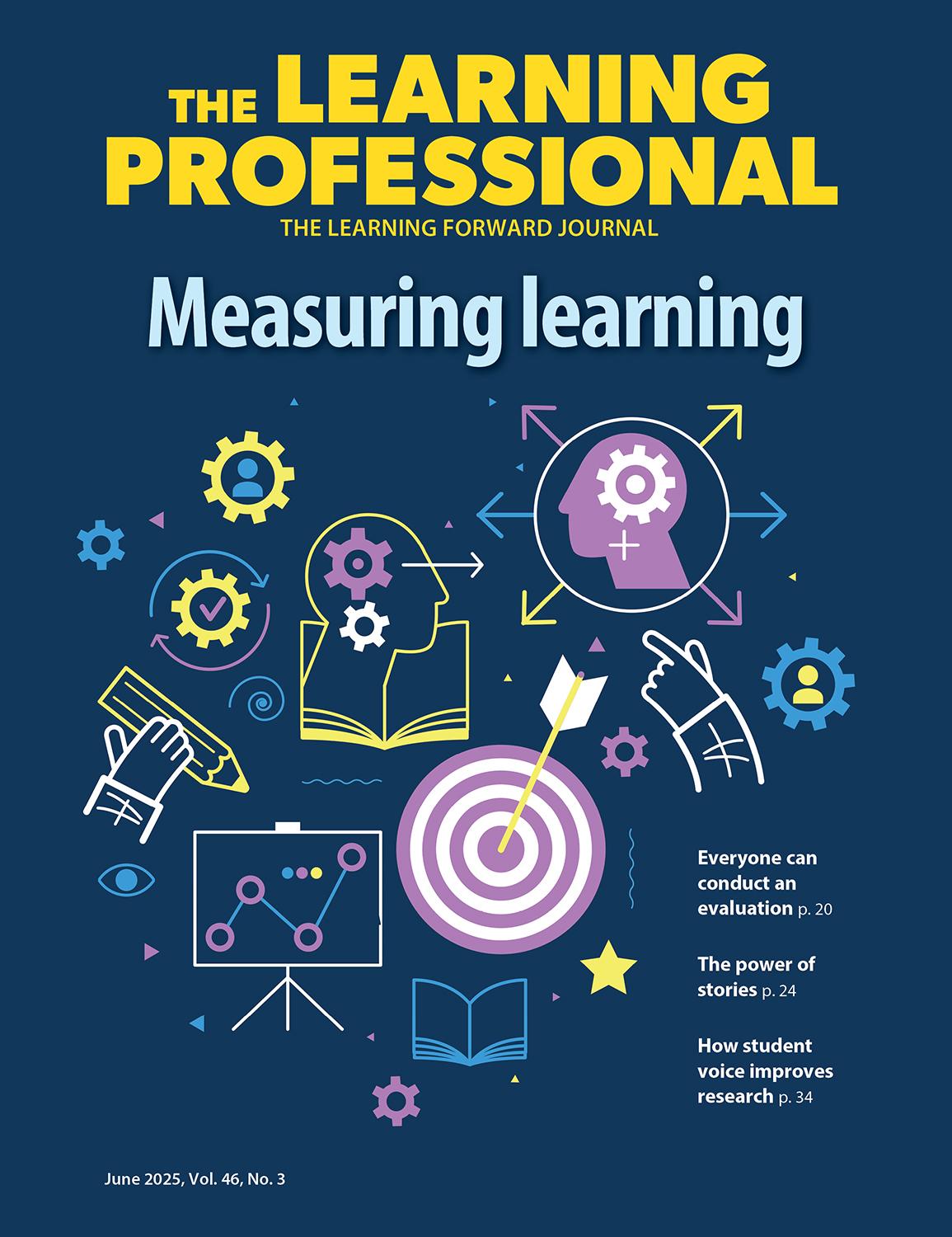The Effective Principal
5 Pivotal Practices That Shape Instructional Leadership
By Pamela Mendels
February 2012
Vol. 33 No. 1
Read the remaining content with membership access. Join or log in below to continue.
Sed ut perspiciatis unde omnis iste natus error sit voluptatem accusantium doloremque laudantium, totam rem aperiam, eaque ipsa quae ab illo inventore veritatis et quasi architecto beatae vitae dicta sunt explicabo. Nemo enim ipsam voluptatem quia voluptas sit aspernatur aut odit aut fugit, sed quia consequuntur magni dolores eos qui ratione voluptatem sequi nesciunt. Neque porro quisquam est, qui dolorem ipsum quia dolor sit amet, consectetur, adipisci velit, sed quia non numquam eius modi tempora incidunt ut labore et dolore magnam aliquam quaerat voluptatem.
References
Darling-Hammond, L. (2007). Excellent teachers deserve excellent leaders. In Education leadership: A bridge to school reform (p. 17). New York: The Wallace Foundation. Available at www.wallacefoundation.org/knowledge-center/school-leadership/key-research/Pages/Bridge-to-School-Reform.aspx.
Goldring, E., Porter, A.C., Murphy, J., Elliott, S.N., & Cravens, X. (2007). Assessing learning-centered leadership: Connections to research, professional standards, and current practices. New York: The Wallace Foundation. Available at www.wallacefoundation.org/knowledge-center/school-leadership/principal-evaluation/Pages/Assessing-Learning-Centered-Leadership.aspx.
Leithwood, K., Louis, K.S., Anderson, S., & Wahlstrom, K. (2004). How leadership influences student learning. New York: The Wallace Foundation. Available at www.wallacefoundation.org/knowledge-center/school-leadership/key-research/Pages/How-Leadership-Influences-Student-Learning.aspx.
Louis, K.S., Leithwood, K., Wahlstrom, K., & Anderson, S. (2010). Investigating the links to improved student learning: Final report of research findings. New York: The Wallace Foundation. Available at www.wallacefoundation.org/knowledge-center/school-leadership/key-research/Pages/Investigating-the-Links-to-Improved-Student-Learning.aspx.
Pierce, P.R. (1935). The origin and development of the public school principalship (p. 11). Chicago: The University of Chicago Press. Available at www.archive.org/details/origindevelopmen00pier.
Porter, A.C., Murphy, J., Goldring, E., Elliott, S.N., Polikoff, M.S., & May, H. (2008). Vanderbilt assessment of leadership in education: Technical manual, version 1.0. New York: The Wallace Foundation. Available at www.wallacefoundation.org/knowledge-center/school-leadership/principal-evaluation/Pages/Vanderbilt-Assessment-of-Leadership-in-Education-Technical-Manual-1.aspx.
Portin, B.S., Knapp, M.S., Dareff, S., Feldman, S., Russell, F.A., Samuelson, C., et al. (2009). Leadership for learning improvement in urban schools. New York: The Wallace Foundation. Available at www.wallacefoundation.org/knowledge-center/school-leadership/district-policy-and-practice/Pages/Leadership-for-Learning-Improvement-in-Urban-Schools.aspx.
Shelton, S. (2011). Strong leaders strong schools: 2010 school leadership laws. Denver, CO: National Conference of State Legislatures. Available at www.wallacefoundation.org/knowledge-center/school-leadership/state-policy/Pages/Strong-Leaders-Strong-Schools-2010-School-Leadership-Laws-.aspx.
Simkin, L., Charner, I., & Suss, L. (2010). Emerging education issues: Findings from The Wallace Foundation survey (pp. 9-10). New York: The Wallace Foundation.
The Wallace Foundation. (2012, January). The school principal as leader: Guiding schools to better teaching and learning. New York: Author. Available at www.wallacefoundation.org/knowledge-center/school-leadership/effective-principal-leadership/Pages/The-School-Principal-as-Leader-Guiding-Schools-to-Better-Teaching-and-Learning.aspx.
Pamela Mendels (pmendels@wallacefoundation.org) is senior writer at The Wallace Foundation in New York City.
Recent Issues
NAVIGATING NEW ROLES
April 2025
Whether you’re new to your role or supporting others who are new,...
LEARNING DESIGNS
February 2025
How we learn influences what we learn. This issue shares essential...
BUILDING BRIDGES
December 2024
Students benefit when educators bridge the continuum of professional...
CURRICULUM-BASED PROFESSIONAL LEARNING
October 2024
High-quality curriculum requires skilled educators to put it into...








